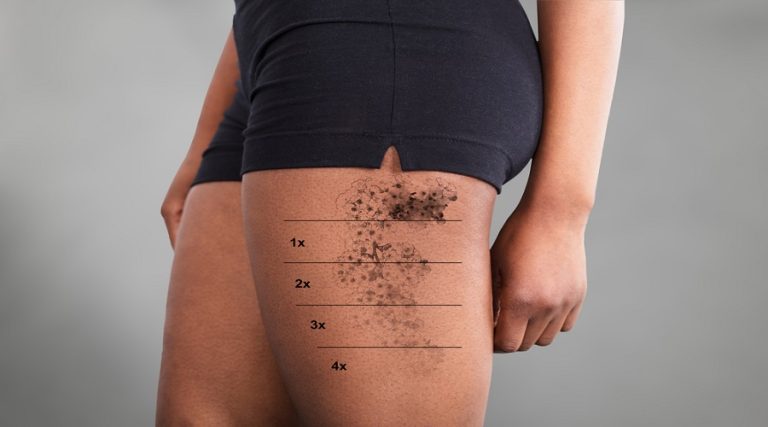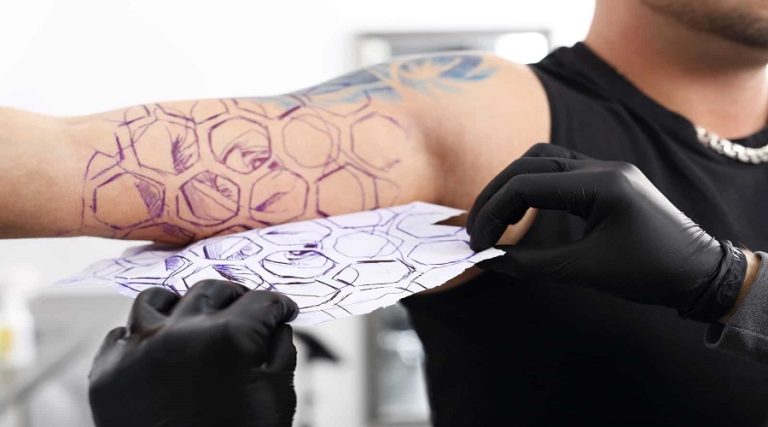Laser tattoo removal can cause some skin irritation and discomfort, but it is generally a safe and effective way to remove unwanted tattoos. Some people may experience minor side effects such as redness, swelling, or blistering, but these should all heal within a few weeks. In rare cases, laser tattoo removal can cause permanent scarring.
Laser tattoo removal is a popular choice for people who want to get rid of their tattoos. However, there is a risk that the laser can leave scars.
The good news is that laser tattoo removal is generally very safe and effective.
The risks of scarring are low, but they do exist. If you’re considering laser tattoo removal, it’s important to talk to your dermatologist or physician about the risks involved.
Does Laser Tattoo Removal cause scars?
Does Skin Go Back to Normal After Laser Tattoo Removal?
Laser tattoo removal is a popular choice for people who want to get rid of an unwanted tattoo. But what happens to your skin after the procedure? Does it go back to normal?
The short answer is yes, laser tattoo removal will generally leave your skin looking normal. However, there are some potential side effects that you should be aware of before undergoing treatment.
The most common side effect of laser tattoo removal is temporary hypopigmentation (lightening of the skin).
This usually lasts for a few weeks or months and then fades back to your normal skin color. However, in some cases, hypopigmentation may be permanent. There is also a risk of hyperpigmentation (darkening of the skin), which is more common in people with darker skin tones.
Other potential side effects include scarring, blistering, and infection. These risks are usually low when the procedure is performed by a qualified dermatologist or other medical professional using proper techniques.
Does Tattoo Removal Scar Go Away?
It’s no secret that getting a tattoo removed can be quite the process. Not only is it painful, but it can also cause scarring. So, does tattoo removal scar go away?
The answer to this question largely depends on the method used to remove the tattoo. For instance, lasers are known to be much less likely to cause scarring than traditional methods like surgery or dermabrasion. That being said, even laser tattoo removal can cause some scarring – though it is usually very minor and barely noticeable.
In most cases, any scars caused by tattoo removal will eventually fade away on their own. However, there are some things you can do to help speed up the healing process and reduce the risk of scarring. These include keeping the area clean and moisturized, avoiding sun exposure, and not picking at any scabs or crusting that may form.
If you do happen to develop a scar from tattoo removal, there are several treatments that can help minimize its appearance. These include topical creams and gels, laser resurfacing, and injectable fillers. In severe cases, surgery may even be an option.
So there you have it – everything you need to know about tattoo removal scars! Remember that in most cases they will eventually fade away on their own, but there are treatments available if you want to speed up the healing process or reduce the appearance of any scars that may occur.
What are the Disadvantages of Laser Tattoo Removal?
There are a few disadvantages to laser tattoo removal. First, it can be quite expensive. The cost of the procedure will depend on the size and location of the tattoo, as well as how many sessions it will take to remove it.
Second, there is a risk of side effects, such as skin irritation, scarring and changes in skin pigmentation. Finally, there is no guarantee that the tattoo will be completely removed.
How Do You Prevent Scars from Laser Tattoo Removal?
Laser tattoo removal is a popular treatment to remove unwanted ink from the skin. But, like any other tattoo removal method, it can cause scars. Here are some tips to help prevent scars from laser tattoo removal:
1. Choose a reputable laser tattoo removal provider. Be sure to research the credentials of your chosen provider and make sure they have experience with the type of laser being used for your treatment.
2. Follow all aftercare instructions.
After your treatment, it’s important to clean the treated area and apply any ointments or creams as directed by your provider. This will help promote healing and prevent infection.
3. Avoid picking at scabs or scratching the treated area.
It’s normal for there to be some redness, swelling, and scabbing after laser tattoo removal treatments. However, it’s important not to pick at these scabs or scratch the area, as this can lead to scarring.
4. Protect the treated area from sunlight .
After laser tattoo removal treatments, it’s important to protect the treated area from sunlight exposure for at least six weeks . This will help prevent hyperpigmentation (darkening) of the skin which can lead to scarring .

Credit: authoritytattoo.com
Does Laser Tattoo Removal Hurt
Laser tattoo removal can be a very painful experience. The laser targets the tattoo pigment and breaks it up into smaller pieces. These small pieces are then absorbed by the body.
The pain can vary depending on the size and location of the tattoo, as well as the person’s pain tolerance. numbing cream can be used to help lessen the pain, but it will not completely eliminate it.
Do Tattoo Removal Scars Go Away
If you’re considering tattoo removal, one of your main concerns may be whether or not the procedure will leave behind scars. While it’s true that some people do experience scarring after tattoo removal, there are a number of factors that can affect the extent of scarring and whether or not it will eventually fade away.
The type of laser used for tattoo removal can play a big role in scarring.
For example, older lasers (such as carbon dioxide lasers) tend to cause more damage to the skin and are more likely to result in scarring. Newer types of lasers (like picosecond lasers) are much less likely to cause scarring because they remove tattoos with shorter pulses of light energy that don’t damage the surrounding skin tissue as much.
In addition, the skill of the technician performing the tattoo removal can also affect your risk of scarring.
A experienced and reputable technician is more likely to minimize any potential damage to your skin during treatment, which can help reduce your risk of developing scars.
Finally, it’s important to keep in mind that everyone heals differently and some people are simply more prone to developing scars than others. If you have a history of keloid formation (raised, red scars that form around injuries), you may be more likely to develop scars after tattoo removal.
However, even if you do develop some degree of scarring, there’s a good chance it will eventually fade away with time.
Tattoo Removal Scarring
Removing a tattoo is a difficult and painful process that often leaves behind permanent scarring. There are several methods of tattoo removal, including laser surgery, dermabrasion, and excision. Each method comes with its own set of risks and side effects, including the potential for scarring.
Laser surgery is the most common method of tattoo removal. It uses high-energy lasers to break up the ink pigments in your skin. This can cause burns, blisters, and scars.
Dermabrasion is another popular method that uses a rotating wire brush to wear away the top layers of your skin. This can also cause permanent scarring.
Excision is the most invasive form of tattoo removal.
It involves cutting out the tattooed area of skin and stitching it back together. This carries a high risk of infection and permanent scarring. If you’re considering removing a tattoo, be sure to talk to your doctor about all the risks involved before making any decisions.
Conclusion
Laser tattoo removal can leave scars, but the chances are very small. The majority of people who have laser tattoo removal will not experience any scarring at all. However, there is a small percentage of people who may develop some scarring from the treatment.
If you are worried about the possibility of scarring, be sure to talk to your doctor before having laser tattoo removal.




